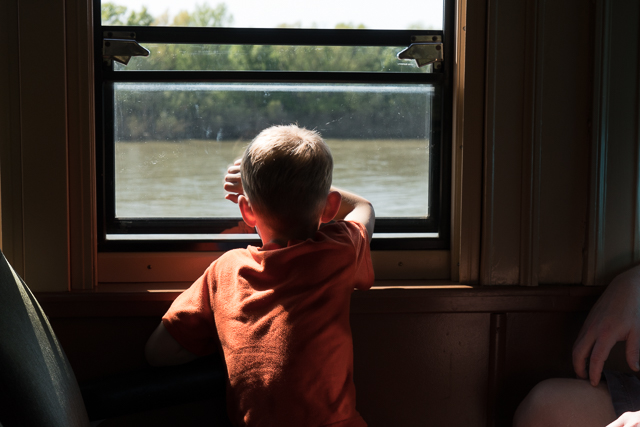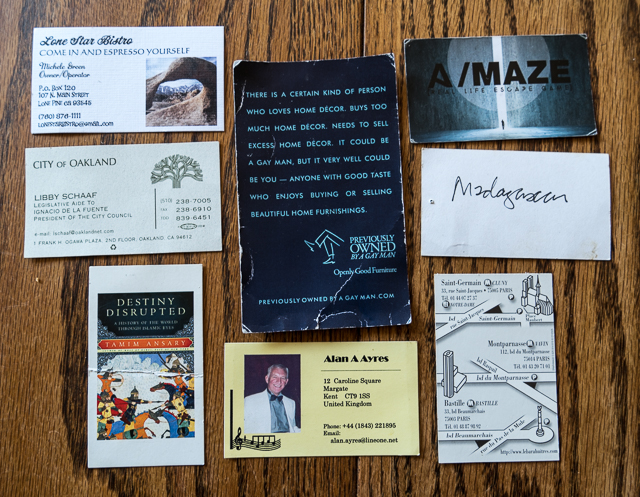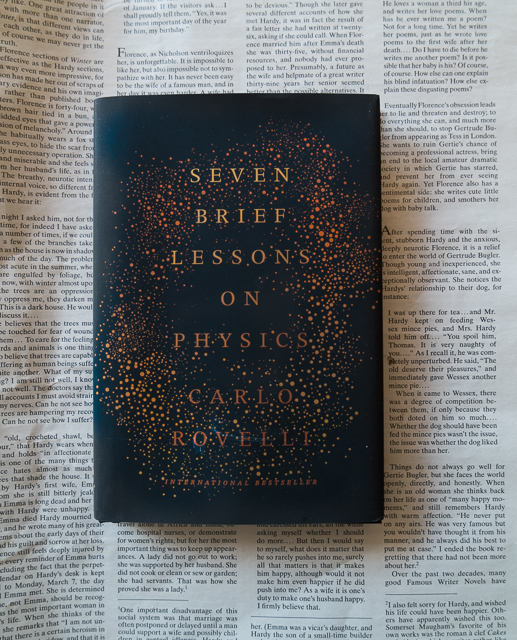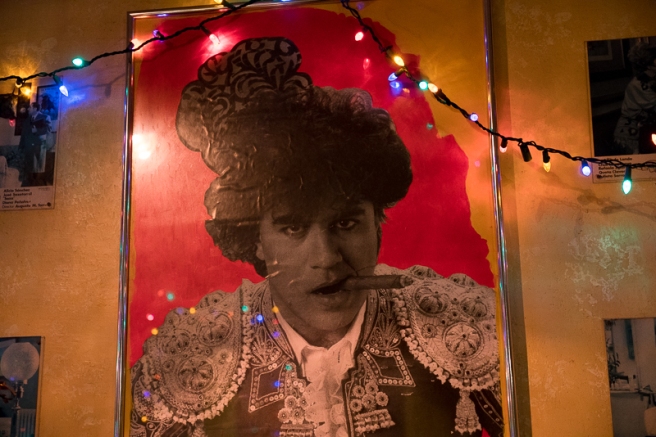
About a month ago I went to see “Second Time Around,” a show at the San Francisco Marsh featuring the story telling of Charlie Varon and the cello playing of Joan Jeanrenaud. It was splendid, the conversation between Varon and Jeanrenaud exciting and unexpected. The music was all original, composed by Jeanrenaud, and it worked wonderfully with theme of the tale, which was about memory and communication and loss and death — not cheerful topics, but rendered with a light touch.
Full disclosure: I was an early investor in the project. I stress that this was not the kind of investment where the investor makes any money. I got opening night tickets, and I may get a T-shirt. Not anything that’s going to get into the Panama Papers.
I did it partially because I know Varon and like his work, and partly (I confess) because I’ve had a long distance lust relationship with Jeanrenaud for decades, dating back to her long tenure with the Kronos Quartet.
A lot of what the Kronos played was challenging to a person whose understanding of serious music kind of ended with Stravinsky. But when I was confused and weary during a concert, there was always her to look at. Although she was always remote and unapproachable on stage, she communicated a certain thrilling sexiness. Does it make me a bad person for thinking that way? Am I, perhaps, a sexist? It may be. Nevertheless, that’s what happened, and I am required to tell the truth, mostly.
I still haven’t met her; it’s best that my love remain pure.
Varon and Jeanrenaud worked for a long time on the piece. Both needed to learn a whole new way of being on the stage. I know that they were both excited by the work, and the result. And they were right. It’s really good.
Here’s the thing: In a couple of weeks, the show is going to close, and it ain’t going to reopen. No touring, no return engagement. It’s a damn shame, but there it is. Most of the remaining shows are sold out, but, according to the Marsh calendar, there are three performances with tickets still available: April 9, April 16 and April 17.
Really, go see it. All art is transient, one way or another, but this really will disappear in a blink.
————————————
I have a top drawer in my desk. It’s where I put important things. Alas, a lot of things have seemed important over the last 30 years. So the drawer is jammed full — you have to pat it down just to close it — and I have some hesitation about looking for anything; there could be uncashed checks and unanswered summonses in there. Or a snake.
I recently made an pathetic attempt to, uh, curate the drawer. I got no further than the large pile of business cards I had thrown in there over the years. A lot of them were entirely mysterious, people I had no memory of ever meeting. (I bet you have a similar stash of business cards somewhere; it might be amusing to try to cull them sometime).
It would be silly of me to write about the sundry people represented by the cards. Maybe there are some people I really should remember, but I am real bad at reconstructing lobby conversations or dinner party chat. There might even be people who are irritated that I don’t remember them — I have a terrible memory for names anyway. Or are, unbeknownst to me, hiding from the cops.
Still, there was grist:

At top right is a card for an interesting new attraction in Montreal. It’s not a maze at all; it’s an “escape game,” although racing through echoing sewers is not part of the deal. Rather, you’re presented with a scenario (ours concerned a crazed scientist with a bomb and a lost love) that you must solve by ransacking the room for clues. It’s like being inside a mystery story. It’s very cool.
There are escape games in many urban areas. Google is your friend.
Next is the business card of the director of a worthy charity. On the reverse side he wrote “Madagascar” — and I have no idea why. But I saved it, because someday I may wish information about lemurs. Below it is the card of Le Bar a Huitres, a restaurant in Paris I have no memory of entering. But I love the maps on the back, with appropriate landmarks and useful data, including Metro stops. I advocate maps on every business card; so functional, so lovely.
Center below is Alan A. Ayres, the “gentleman host” on a cruise ship we once taught on. We were all glorified help; we dined with the paying guests, but we were not of them. Ayres’ job was to dance with the unaccompanied ladies, of whom there were a plethora. He provided unthreatening companionship, loaded with buckets of British charm. And he was a wonderful dancer.
In his previous life, he and his partner had run a B&B in Dorset. Then the partner died, and he moped about for a bit, and then he decided to rejoin the carousel of life. Our last night aboard, he took Tracy for a sample dance. She looked fabulous; Alan was a gifted partner, and a gifted partner can make almost anyone glide enchantingly around the floor.
On the left we have, top to bottom, the best coffee place in Lone Pine (because I might need that data sometime), a Libby Schaaf business card from when she was working for Ignacio de la Fuente (and she helped save the trees on our block), and a business card from Tamim Ansary, author of the wonderful “Destiny Disrupted”, to whom I exhibited fanship, although where and when that gushing happened is currently unknown.
In the middle is an oversized card I picked up somewhere. It is for a company called Previously Owned by a Gay Man. They sell “openly good furniture.” You can read the pitch. Sometimes I am very happy living in the modern world.
Did I throw away any of the cards? Not yet. They could still prove useful, because life is complicated and often circular, and you never know. That’s my mantra; that’s why why my drawer is still full.
———————-

It took me only a few hours to read “Seven Brief Lessons on Physics,” but they were intense hours. Rovelli disposes with the familiar bits of science history (relativity theory, quantum theory) pretty quickly, and then settles into more speculative realms, the possible implications of the current views of how the universe works.
String theory? Sure, that’s there. But loop quantum gravity? Have you heard about that? Can your brain handle it? Planck stars? Integrated information theory? They’re all covered, complete with their attendant mysteries.
Because the chapters are so short, every sentence carries a lot of information, and slow reading is imperative. These sentences are marvels of clarity and grace, and I was happy to be drifting along with them, almost understanding things that are still mysterious, even to experts.
But I realized that Rovelli did not write those admirable sentences at all. He wrote in Italian, after the manner of Italian people. The actual prose was created by his translators, Simon Carnell and Erica Segre. Carnell is the author of “Hare,” a book about hares; Segre is a lecturer in gender studies at Cambridge. They’ve translated other stuff together. They’re really good. Hooray for them, and hooray for all translators who allow us to read Tolstoy, Voltaire, Aristophanes, Dante and Sei Shonagon. They work hard to embody great artists; for their efforts, they are granted obscurity and small paychecks.


Let me recommend Six Easy Pieces, by Richard Feynman. These are taken from the early part of the Feynman Lectures (which I must boast about having attended and received a B+). Feynman’s style and energy just suck you into wanting to learn more.
LikeLike
For many new parents, play groups were a way of normalizing your child’s behavior and your responses to those behaviors. Oh, other children do that. Oh, look that mom/dad feels similarly. I feel like you are my playgroup. I too have THAT drawer. I too have those cards…..thank you, I feel much better! Claudette
Sent from my iPad
>
LikeLike
It’s a universal problem.
LikeLike
Twenty years ago, Le Bar a Huitres was wonderful. We went back a couple f yars back and, alas, it has bcome a tourist trap. Pity, but these things happen…
LikeLike
Small World Department: I love Le Bar a Huitres and have eaten there several times, and I went to college with Tamim Ansary. The rest of it is, AFAIK, foreign to me.
LikeLike
Yow!
LikeLike
Yea! Thanks Jon. Staring at a stack of biz cards at the base of my iMac, 2 yrs worth. Nearby small boxes of decades of 2×3 memories. Hard to let go.
LikeLike
I too have a bunch of business cards BUT I actually have a miniature two drawer file cabinet they perfectly fit into. Got it from one of those silly catalogs with tons of items you don’t really need. Yes, it’s also on my retirement list to go through…
LikeLike
Jeanrenaud’s survival and continued glorious performance in face of a crippling disease should not be kept private – if that’s what Jon is doing – because she herself never tried to keep it secret and dealing with it is a tribute to her and to the human spirit.
Back in 1999, when she left Kronos, Jeanrenaud said the diagnosis of MS also put a strain on relations with her colleagues: “It isolated me in a sense, because I was the issue. Maybe there was a way to get around it, but I wasn’t even suggesting that because I was already getting frustrated. I thought, ‘There are other things I really want to try, and I won’t be able to try them if I stay in Kronos.’ ”
In 2011, she told Anil Prasad [http://www.innerviews.org/inner/jeanrenaud.html]::
“[MS] took the wind out of my sails and really changed my focus, that’s for sure. I asked myself “Okay, what’s really important here? It’s my life, family and the people around me.” I also found myself thinking “What makes you happy? What keeps you interested in life and going forward?” All of that stuff became much more important. My career was never that important to me. I feel very lucky to have been thrown into the situations I’ve been thrown into.
“And even MS has changed my focus and direction in ways that are good. I like being home a lot more. I don’t miss being on the road. That’s a hard life and I probably would have kept doing that without thinking twice about it. I’m happy that I decided “Okay, I’m going to see where my artistic life can lead me.” It became a very creative thing for me. I still feel I have a lot to learn. I’ve played my cello for 44 years and I know how to do that, but I still find the instrument very intriguing.”
LikeLike
Thanks for that. I heard the story from someone who was speaking privately; I was using an abundance of caution. Thank you, Janos; she was just great.
LikeLike
This sad story reminds me of Jacqueline du Pré, a wonderful cellist who got career-ending MS, from which she died way too young, at 42. I’m lucky to have heard her perform once with her husband, Daniel Barenboim, shortly before she stopped playing.
LikeLike
I just did the card thing. In a box on my desk. Threw 80% of them away. Some had really meaning for me, some were people I cared for. I kept those>
LikeLike
Wonderful! Reading this is like having my underused brain unleashed once more, after long absence.
LikeLike
A friend calls the stuff in the drawer, and all over the house, and in the attic and closets and car and desk and bookshelves, “sacred trash.”
LikeLike
That will be my line for now on.
LikeLike
So glad you reminded me to see Charlie Varon and Joan Jenrenaud’s show. I heard Charlie talking about their collaboration in a radio interview last month, sounded great, then it slipped out of my thoughts. Just snagged a couple of tickets for April 16. I recall the premise had to do with a young person interviewing a WW II vet. My kids’ middle schoolers did that, and it was mostly rewarding. My father in law was one of the interviewed vets. Planning to take my 16 year old who took part in the interviews.
And speaking of translations from the Italian, maybe you have already read Elena Ferrante’s incredible Neapolitan novels. I am part way through the third of the four. She creates a world of characters, so human, brilliant yet flawed, a page turner in the best sense of the word– not because you are manipulated into needing to know what happens next, but because every page brings you closer to the characters and their surprising lives. I don’t know what I will do when I reach the end if book four– maybe start over?
LikeLike
That is what the show is about, that and other things. Glad you’re going. And who was the translator of the Ferrante books?
LikeLike
The translator is Ann Goldstein, described on the book jacket as the copy editor for The New Yorker. It’s a beautiful translation. Elena Ferrante is a pseudonym; no one knows her true identity, despite her growing fame. Maybe even Ann Goldstein has to work through intermediaries.
LikeLike
By the way, I have a connection to Joan Jenrenaud through my friend and sometime collaborator, Barbara Higbie. Joan played cello (beautifully, of course) on Barbara’s composite, “West on County D,” written for her husband, Wayne, who had moved to California from Wisconsin, where he grew up near a highway called County D. I felt a personal connection to that story, so, with Barbara’s permission, I wrote and sang lyrics to her music, and we made a video together that played in a couple of film festivals and also got a fair amount of radio play. I didn’t get to meet Joan, because the music had already been recorded before my participation, but I really appreciate her musicianship and her personal courage in continuing to play through her illness. If you would like to hear/see the music video, here is a link:
LikeLiked by 1 person
I got “An error occurred,” but I’ll try again.
LikeLike
http://www.donarbor.com
Thanks for trying. I just tried viewing on this website, and it worked fine. Another “by the way”: my wife reminds me that we are going to the Berkeley Library event in May, so I look forward to meeting you then.
LikeLike
Wonderful article on business cards. I did cull mine several years ago but your musings on them make me want to go back to my pile and do the same. And thanks to Don who recommends Elena Ferrante. I will do so
LikeLiked by 1 person
I’m wondering whether Erica Segre is related to the great physicist Emilio Segre.
LikeLike